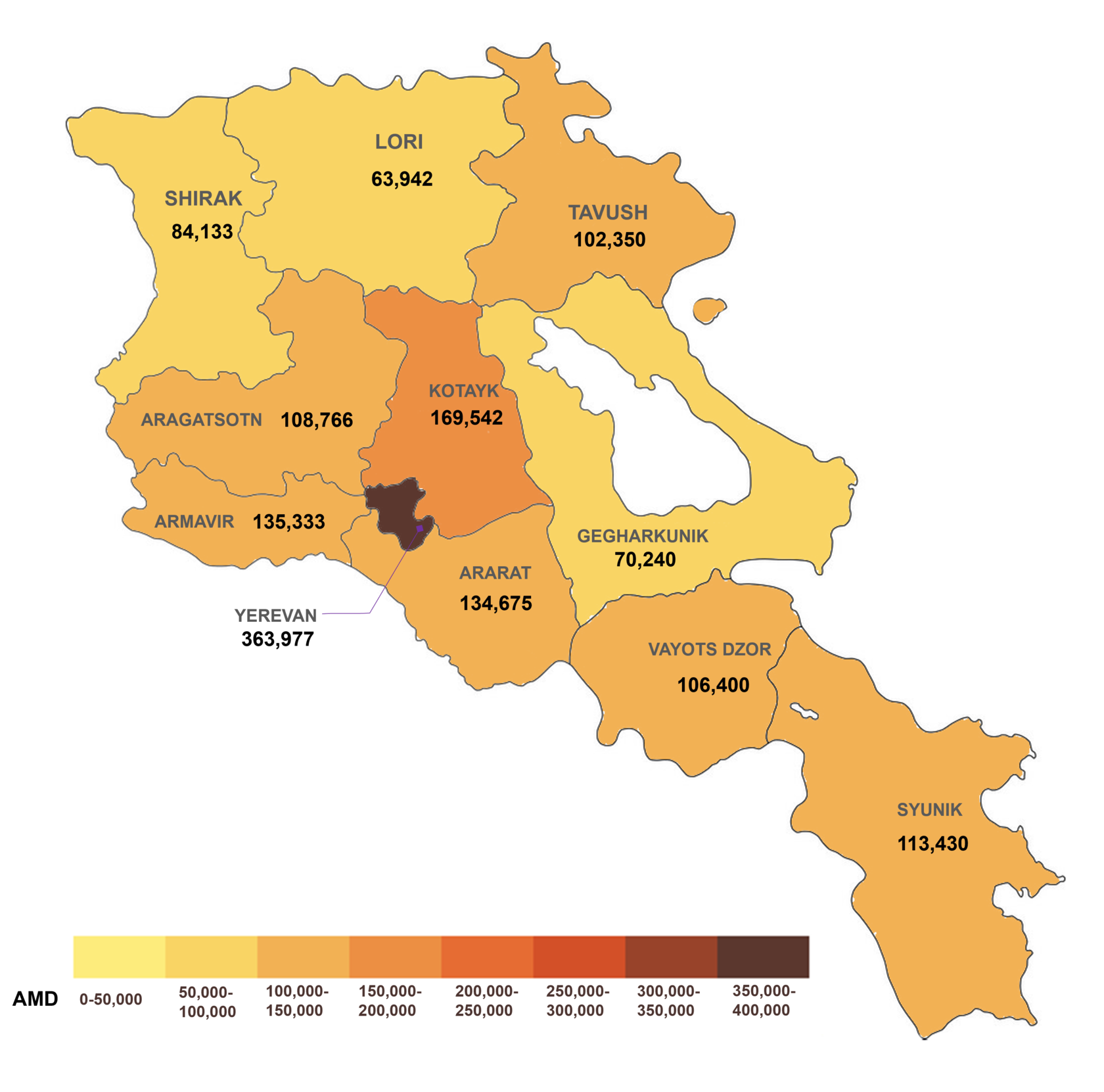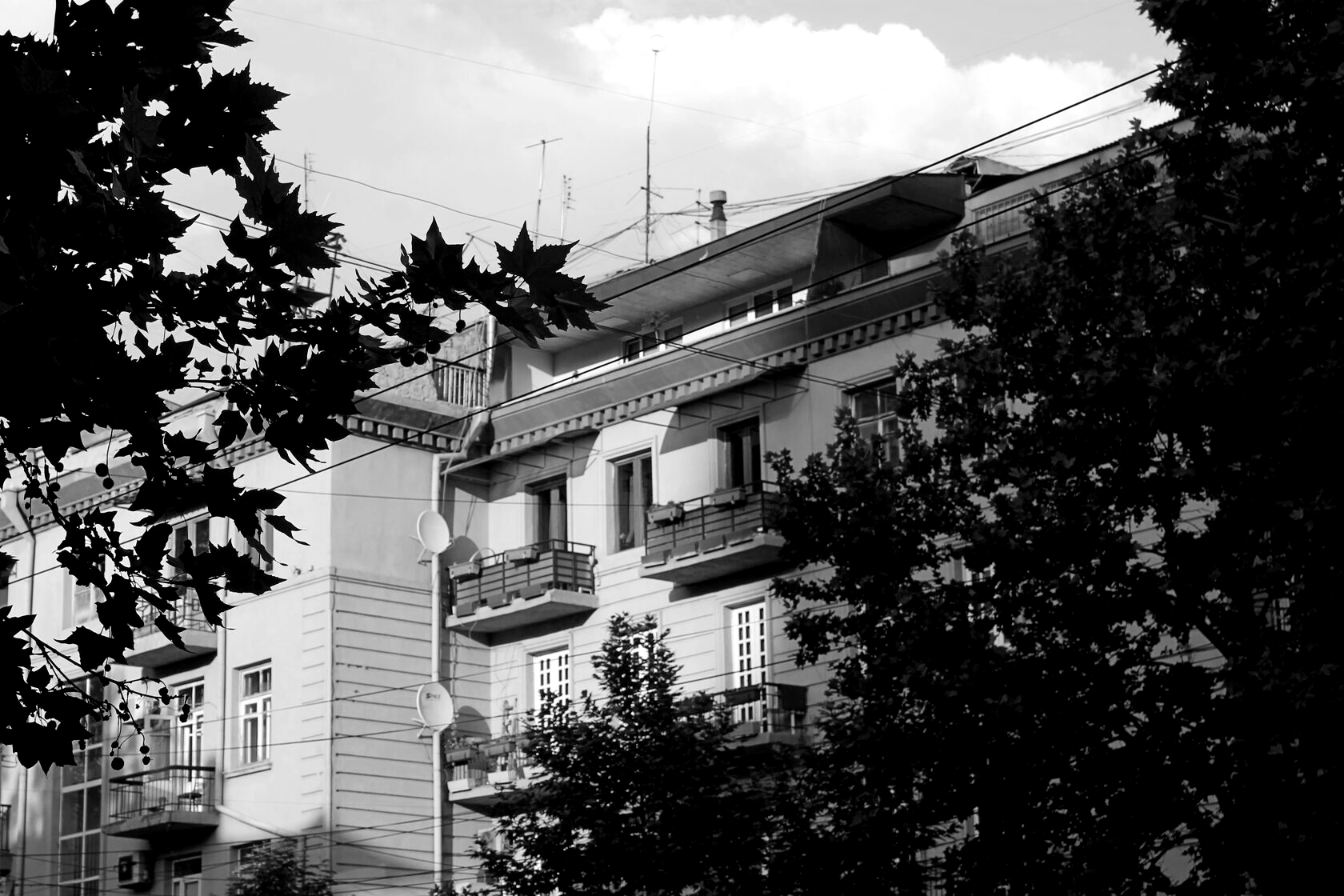In light of undeniable preference for ownership among the Armenian society (showcased by one of the highest home ownership rates in the world at 99.8% and the social stigma associated with renting, the latter is, in most cases, a last resort families are forced into by being priced out of the ownership market. In recent years, the relatively active labour environment ushered in a more tolerant attitude towards long-term renting, but it is still reserved to the outsiders representing the well-paid segment who can access the higher-priced units in the “elite” buildings.
Looking at the data from February 2022, the range of median per square meter prices across the country is rather broad –with as low as AMD 22,100 (around $45) in the city of Tumanyan in Lori region, and an average of AMD 690,550 (around $1381) for a square meter of an apartment in the Kentron district in the capital. However, several factors need to be pointed out prior to cross-comparing income and housing prices and the elasticity thereof. First, the available data on income – one collected and provided by the Statistics Committee of RA based on the data from the State Revenue Committee of the RA – is accrued from the reported incomes and does not necessarily represent the actual national mean.
And second, the availability of dwelling units is not reflective of its quality: the housing stock in Armenia is old – with much of what would be deemed affordable requiring major repair. In addition, living conditions in certain provinces as well as concerns over border security are major factors affecting population’s willingness to pay and reside in those communities.

Affordable is not all that matters: the housing stock in Armenia
Read more ----->>>
